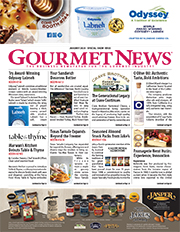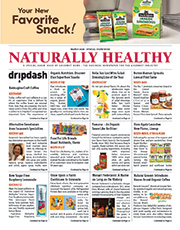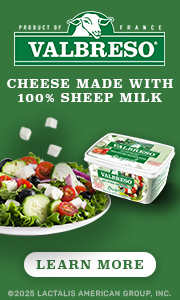USDA Withdraws Animal Welfare Rule from National Organic Program
By Lorrie Baumann
The U.S. Department of Agriculture announced Monday that it is withdrawing the animal welfare regulation it had delayed three times. The rule would have established animal welfare standards that would have applied to the producers of organic livestock and eggs. The regulation was proposed in the waning days of the Obama administration after the completion of a rulemaking process that included extensive public comments, which were overwhelmingly in favor of adopting the new standards. In the opposite camp was the National Pork Producers Council, which applauded the USDA action. The USDA delayed the rule following the inauguration of the Trump administration, and then delayed it further. Before the final withdrawal, the rule had been scheduled to take effect in May and would have applied only to products bearing the USDA-certified organic seal.
The Obama-era regulation – the Organic Livestock and Poultry Practices rule – would have incorporated into the National Organic Program welfare standards that were not based on science and that were outside the scope of the Organic Food Production Act of 1990, according to the National Pork Producers Council, which maintains that the Organic Food Production Act limited consideration of livestock as organic to feeding and medication practices.
“We’d like to thank Sec. Perdue and the Trump administration for listening to our concerns with the rule and recognizing the serious challenges it would have presented our producers,” said NPPC President Ken Maschhoff, a pork producer from Carlyle, Illinois.
The rule would have required that poultry must be housed in spaces that are big enough for the birds to move freely, stretch their wings, stand normally and engage in natural behaviors. Livestock, including poultry, would have been required to have access to outdoor space year-round. The rule would have banned the current practice, followed by some poultry producers, of confining birds to barns with a screened porch as their only access to the outdoors.
NPPC maintains that animal production practices have nothing to do with the basic concept of “organic.” The Organic Trade Association begs to differ. “USDA wrongly alleges that the Organic Foods Production Act of 1990 (OFPA) does not authorize the animal welfare provisions of the OLPP final rule, and, in doing so, cites definitions of organic outside the law,” the organization said in a statement.
“It is notable that USDA cites the Merriam-Webster dictionary to justify a definition of ‘organic,'” said Organic Trade Association CEO and Executive Director Laura Batcha. “Merriam-Webster also defines outdoor as ‘not enclosed; having no roof,’ and porches as ‘a covered area…having a separate roof.’ Organic standards already require that organic producers provide their animals access to the outdoors. So, by the assessment from Merriam-Webster, a source which USDA endorses in its official notice, porches are clearly not allowed in organic.”
The Organic Trade Association has filed suit in an attempt to force the USDA to implement the rule and will now be amending its complaint to challenge this new USDA action. “Since the filing of our lawsuit last September, a host of organic stakeholders representing thousands of organic farming families, organic certifiers and organic policymakers – along with leading animal welfare and retail groups speaking out for millions of consumers — have joined our challenge,” Batcha said. “The organic sector depends on USDA to set organic standards fairly and according to the law. When USDA fails to do this, it is time for the organic community to insist that it live up to its responsibility.”
D’Artagnan: An Obsession with Quality
By Lorrie Baumann
Ariane Daguin thinks that the way forward for brick-and-mortar grocers is to focus on selling their customers better food rather than more food. As the CEO of D’Artagnan, which distributes high-quality meat and poultry products to fine-dining restaurants as well as to grocers across the U.S., she has a bird’s eye view of how the American grocery business is evolving to try and meet the challenge of online grocers.
She notes that over the past decades since the end of World War II, grocers have been offering their customers more and more – more food, greater variety, year-round supplies of products once thought of as strictly seasonal. “You cannot have quality if you offer too many flavors of too many different products,” she said. “We have created a market for a lot of things we don’t need but that are pushed to us.”
The tide of consumerism inspired by modern marketing and the media’s obsession with what’s new and different has led inexorably to bigger stores and growing costs to operate those bigger stores. Those higher costs and the consumer expectations that caused them are now creating greater competitive burdens for brick-and-mortar grocers struggling to survive against online retailers. “The grocer has a big conundrum – which is the rent,” Daguin says. “It’s survival – they need to pay the rent. The problem is that it doesn’t work any more, because e-commerce has taken over. The consumer has so much more convenience and choice with e-commerce that the grocer has to really worry.”
Daguin suggests that the way to deal with this problem is to follow the lead of those successful grocers who now emphasize quality and who are creating a sensory and educational experience in their stores instead of just pushing volume. “To bring new clients in the store, you need to propose experiences that they cannot get online: true education from knowledgeable store employees, personalized custom fabricating, butchering and cooking in store, tastings…” she said.
Focusing on quality rather than variety is the approach she has taken in her own 33-year-old company. “What we did from the beginnings of D’Artagnan was to thrive towards excellence in all facets of the company, pushing farmers to very strict animal husbandry rules, slaughterhouses to process and butcher with more care, to stop bloating meats with water, controlling temperatures from loading docks to trucks to store … for one reason only – the quality of the product at the end,” she says.
D’Artagnan’s Green Circle chickens provide a handy example – they are raised free-range and fed a diet of actual vegetables, are certified-humane and air-chilled. They’re also antibiotic free. “We were the first ones, and we’re still pretty unique in that we demand that all animals be antibiotic free from birth,” Daguin says.
The chickens are processed in small slaughterhouses rather than in industrial-scale facilities, chilled with air rather than water and brought daily to a D’Artagnan warehouse in Georgia, Texas, Illinois or New Jersey. The air chilling reduces their weight, raising the cost per pound, but it means that there’s no dilution of flavor. “We get our deliveries from the chicken slaughterhouse every night,” Daguin says. “So every day, they get the one-day-old chickens. Nobody else can say that.”
From the warehouse, the chicken is put on a truck that has extra temperature controls to ensure that the chicken arrives at the market as fresh as possible, with the longest possible shelf life for the retailer. “We take this totally to the need of the retailer. They need the maximum shelf life for the products, and minimum quantities in each case,” Daguin says. “These are not corn flakes that fly off the shelves.”
Bayonne Ham Council Consortium Markets to Consumers
There is ham and there is Bayonne ham. After successfully launching a large-scale trade-focused campaign in 2017, the crown jewel of French cured ham continues its conquest of the US market by seducing Americans’ palates.
“Bayonne ham addresses American foodies’ search for authentic, premium and traceable craft products,” says Pierre-Yves Alifat, head of the Bayonne Ham Council Consortium. “The launch of our campaign coincides with a growing demand for charcuterie in the U.S., thus making today the perfect time to try this delicacy.”
Currently, five Bayonne ham brands are available across the United States, from 20 different distributors and their presence is growing. Aside from its delicate and subtle flavors, here are the top six reasons that make Bayonne ham so unique:
- An inimitable gem – Bayonne ham earned the Protected Geographical Indication (PGI) status in 1998, a label that guarantees the quality and geographic origin of a product. The ham is so inherently special and inimitable that it must come from southwest France to be called that way.
- Bayonne Ham, the taste of an outstanding terroir – Bayonne’s terroir is one-of-a-kind: the Adour Basin is influenced by the perfect combination of sea and mountains. Winds from the south known as “foehn” rise from the Pyrénées mountains and are balanced with the moist air flowing from the Atlantic to provide the ideal conditions for proper drying of the meat.
- Pigs, salt, air, patience and nothing else – Four ingredients are essential to the production of Bayonne ham: pigs, salt, air and patience. To qualify for production, pigs must be born and bred in the southwest France and fed with natural products. Even the natural salt from Salies-de-Bearn used in the curing is PGI-labelled, 100 percent natural, pure and rich in oligo-elements.
- An unequaled taste – The harmonious union between the freshest meat and natural salt gives this ham a truly unique and distinguishing flavor. “We have done many demos at our stores, and our shoppers, who are always looking for a new food experience, find Jambon de Bayonne to be just that! With a moderate saltiness and creamy finish, Jambon de Bayonne is unique and stands out among the rest,” said Richard Rosenberg, Director of Deli and Catering Operations at Fairway Market.
- An authentic craft delicacy – The history of Bayonne ham production is what sets it apart from other hams. True to tradition, Bayonne ham has retained its authentic medieval signature: hams are still branded with the “Bayonne” seal and the traditional Laburu Basque Cross.
- A guarantee of traceability and transparency – Bayonne ham producers’ philosophy is based on the complete control of the entire production cycle, from animal feeding to the distribution of the product. Every step along the ham’s journey to the dinner table can easily be traced.
Maison Agour, Delpeyrat, Mayte, Salaisons de l’Adour and Pierre Oteiza are some of the most beloved brands of Bayonne ham available in the United States.






